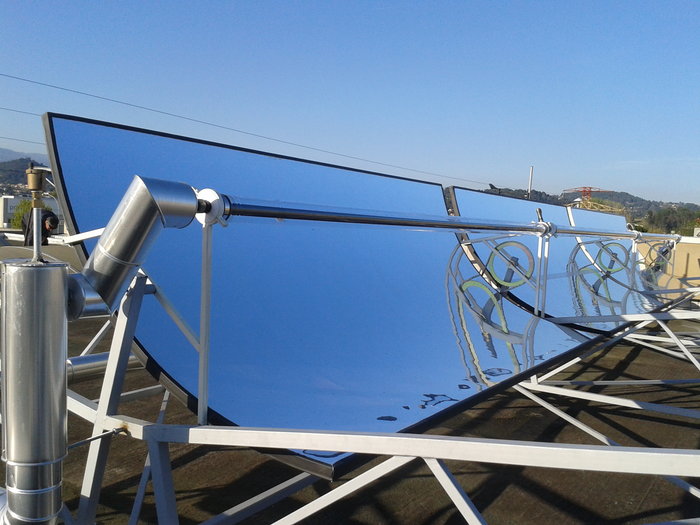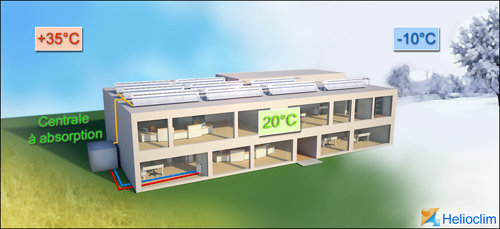One forgotten contributor to carbon dioxide emissions is our air conditioning systems that we indulge in in our offices, factories, homes, and shopping centers.
A team of four space engineers has a solution — use sunlight to create cool air.
The newly developed zero-emission air-conditioning system doesn’t pollute the atmosphere when turned on, bringing zero-carbon buildings a step closer to becoming a reality.

The team gained their expertise from building complex telecom and Earth observation satellites and used it to create an environmentally friendly alternative to conventional temperature-control systems.
The system uses sunshine instead of electricity to power air conditioning and central heating systems, but can also be used to cool refrigerators and heat water.
The team, comprised of Marie Nghiem, Yannick Godillot, Yann Vitupier and Charles Daniel who all worked at Thales Alenia Space in France on satellites such as ESA’s Goce gravity-mapper and and Europe’s Jason ocean-monitors, were determined to reduce energy consumption.
“Building a spacecraft is unusually complex,” said Nghiem. “It must function perfectly for 15 years, so our standards have to be extremely high.”
The system uses curved solar mirror-troughs spread across a building’s roof to concentrate the sun’s power on to tubes to heat water to about 390°F.

This pressurized water enters another unit to provide both hot and cold water, however the team cannot reveal the details of this part of the process. The emerging water can be set at anywhere between –85°F and +149°F, which is then circulated to create the required temperatures for the different parts of the building. When the temperatures are below zero, a water–ammonia mixture is used as the refrigerant.
The sunlight-powered system can work along with the building’s existing chilled and hot water systems and function even on cloudy days since it stores energy.
“It’s important to understand that we are not generating electricity from solar panels to power traditional air conditioning machines,” said Nghiem. “Instead, we are using the Sun’s thermal energy to heat water inside the units and reach the required temperatures.”
A few other companies have been experimenting with solar thermal systems, but what makes the this version unique is that it can provide cooling down to –85°F and heating up to +149°F.

Comments are closed, but trackbacks and pingbacks are open.